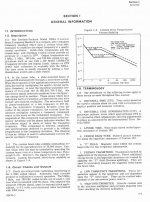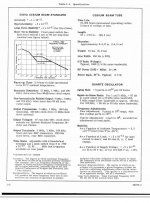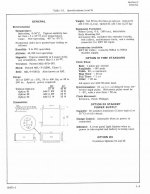The OCXOs I used in the early days of GSM would take up to a week to lock in from cold to the incoming atomic referenced feed. You had to 'quick tune' in SW then let them lock up.
Do any of the boutique brands in Audio use temp stabilised oscillators, or would that take budget off the rare wood side panels for similar audible effect
Do any of the boutique brands in Audio use temp stabilised oscillators, or would that take budget off the rare wood side panels for similar audible effect
No. Atomic clocks may not be good enough for digital audio, as they may have poor phase noise. Their excellent long-term stability is completely irrelevant. The actual output is produced by a quartz crystal, but this is degraded by being in a PLL.RNMarsh said:Wretched excess, i know.
Temperature stabilised oscillators may also be poorer than simpler ones. Anything which can affect frequency is a source of jitter. Note that audio requirements for crystal oscillators are somewhat different from most other applications, so picking an oscillator on the grounds that it is excellent for something else is a good way to spend money but a poor way to get results.
Last edited:
Eighties Signetics Application Guide had a chapter on PLL stages.If we set a low pass filter to the voltage signal witch drive the VCO, it is adding some kind of inertia, or are-we just play with words ?
Flywheels, springs, inertia were used in the analogies.
Dan.
pS or nS!
Clock in pS look at the AES paper!
Are their any outboard sound cards that are not asynchronous mode these days ?.Is this the case? Just picking one medium cost outboard from stereophile shows that it reclocks by dint of the SRC and anything that uses an ESS sabre DAC get jitter removal on chip. Or was I just lucky on a random sample and Musical Fidelity is one of a handful of properly designed converters?
Dan.
Clock in pS look at the AES paper!
Just getting confused one post you had pS the next nS, sorry.....
Found this amongst other doc last night which I found informative and one of the clearest explanations of the types of jitter
Clock Jitter Definitions and Measurement Methods
Last edited:
Is this the case? Just picking one medium cost outboard from stereophile shows that it reclocks by dint of the SRC and anything that uses an ESS sabre DAC get jitter removal on chip. Or was I just lucky on a random sample and Musical Fidelity is one of a handful of properly designed converters?
Did you actually look at what the serial rate converter and SABRE D/A do?
The serial rate converter may be used with either the recovered clock or an internal one. Having tried some they can get the data jitter to 20 nS others may even be better. But if the input jitter is lower the ones I tried actually can raise it. SRCs really don't have large buffers, much of what they have to do is interpolate.
Now what does the SABRE D/A do to reduce jitter? They also use a serial rate converter, then reclocking and a PLL!
So both work to reduce data jitter. Both still require a low jitter D/A clock reference (high quality crystal) for best results.
But the issue still is "Does jitter matter?" You cite shows how even medium range products recognize that it does. But if you want to sample all of the ones out there we can get an idea of how many really do it well.
Flywheels, springs, inertia were used in the analogies.
This might prove helpful.
https://archive.org/details/DynamicalAnalogies
Last edited:
Not sure where they get the peak-peak jitter is 7.44 times the RMS value. But the example they show of a 2.57 pS jitter oscillator making 20.35 pS P-P is interesting.
So as Dunn shows that 100 pS will affect midrange distortions that would mean choosing a clock that has 13.5 pS of RMS jitter is useful for pro applications.
Even if you want to go with 5 nS that would give you a jitter budget of 672 pS. Looking around I can find some prepackaged crystal oscillators spec'd for a jitter of 10 nS. (OK cheapies and not very good.)
Did you actually look at what the serial rate converter and SABRE D/A do?
The serial rate converter may be used with either the recovered clock or an internal one. Having tried some they can get the data jitter to 20 nS others may even be better. But if the input jitter is lower the ones I tried actually can raise it. SRCs really don't have large buffers, much of what they have to do is interpolate.
Now what does the SABRE D/A do to reduce jitter? They also use a serial rate converter, then reclocking and a PLL!
So both work to reduce data jitter. Both still require a low jitter D/A clock reference (high quality crystal) for best results.
But the issue still is "Does jitter matter?" You cite shows how even medium range products recognize that it does. But if you want to sample all of the ones out there we can get an idea of how many really do it well.
I scanned the SABRE data sheet but did not study to the point of fully understanding everything going on there. For a start I don't have a good enough handle on how DS conversion sensitivities are changed by jitter. Dunn put a throw away comment about that in his 1992 paper, but 23 years is a long time in silicon! Reason I asked the question it to try and understand what I am missing if you think there are only about 3 converters out there that are 'good enough'
I would love to have time/tools/access to sample all of them. Sadly have none so have to rely on the sample from those who don't. For example A Case of the Jitters | Stereophile.com has a dozen J-test results in it, some of which 'look' awful.
Does it matter? I don't have an opinion on that yet. I suspect less than some claim, but if the entry point into effectively transparent performance is under £200 I really should find out!
Addendum: I realise the J-test is only 1 point to test jitter and doesn't simulate a bad Tx or cable mismatch due to boutique interconnects, but at least its a repeatable point.
Last edited:
I scanned the SABRE data sheet but did not study to the point of fully understanding everything going on there. For a start I don't have a good enough handle on how DS conversion sensitivities are changed by jitter. Dunn put a throw away comment about that in his 1992 paper, but 23 years is a long time in silicon! Reason I asked the question it to try and understand what I am missing if you think there are only about 3 converters out there that are 'good enough'
I would love to have time/tools/access to sample all of them. Sadly have none so have to rely on the sample from those who don't. For example A Case of the Jitters | Stereophile.com has a dozen J-test results in it, some of which 'look' awful.
Does it matter? I don't have an opinion on that yet. I suspect less than some claim, but if the entry point into effectively transparent performance is under £200 I really should find out!
Addendum: I realise the J-test is only 1 point to test jitter and doesn't simulate a bad Tx or cable mismatch due to boutique interconnects, but at least its a repeatable point.
You are probably right. (Those words on this thread should kill or at least stun half the folks here.) It has been 5 years since I last looked at external converters myself. There are more chips available and at a lower price so there should be more doing it at least reasonably well.
Of course the AES-3 standard is also old and holding up quite well for it's age. It was originally intended as a way for folks to upgrade to digital over existing audio networks. The BBC was behind a good part of it.
Do we have any further papers (even commercial studies?) on audibility of jitter in OUTPUT side of the dac? I read the provided 1992 summary paper but can't seem to get my hands on the original work. There's one on AES from Dolby in 1998 that I also don't have access to. And this one only deals with input-related jitter, which is dependant on the ASRC/buffering of the input chip that each testee provided (read: not terribly helpful as Jan's test quickly shows):
https://cdnav.netfirms.com/shared/Jitter DBT.pdf
And how much should we trust this number if it hasn't been any convergence on an answer and the quoted range is huge?
Seems like the test we need is a pretty specialized DAC clock that can sweep its jitter spec.
This gets piled on oversampling, which should more and more of the jitter into the stopband.
But this is audio...no need for robust studies.
https://cdnav.netfirms.com/shared/Jitter DBT.pdf
And how much should we trust this number if it hasn't been any convergence on an answer and the quoted range is huge?
Seems like the test we need is a pretty specialized DAC clock that can sweep its jitter spec.
This gets piled on oversampling, which should more and more of the jitter into the stopband.
But this is audio...no need for robust studies.
Do we have any further papers (even commercial studies?) on audibility of jitter in OUTPUT side of the dac? I read the provided 1992 summary paper but can't seem to get my hands on the original work. There's one on AES from Dolby in 1998 that I also don't have access to. And this one only deals with input-related jitter, which is dependant on the ASRC/buffering of the input chip that each testee provided (read: not terribly helpful as Jan's test quickly shows):
https://cdnav.netfirms.com/shared/Jitter DBT.pdf
And how much should we trust this number if it hasn't been any convergence on an answer and the quoted range is huge?
Seems like the test we need is a pretty specialized DAC clock that can sweep its jitter spec.
This gets piled on oversampling, which should more and more of the jitter into the stopband.
But this is audio...no need for robust studies.
If you looked at the article just referenced you would see the AYRE were the only products where the jitter was not limiting the CD player performance to less than 16 bits of resolution. Interestingly enough if you look back in the this thread you will find Charles Hansen mentioning jitter!
jitter waveform distortion can be simulated - then the synthetic "jittered" .wav played on a very much lower jitter DAC
I haven't seen studies pushing the human controlled listening test results below the decades old 10-100s of nanoseconds, hydrogenaudio threads I found on jitter don't cite any
I haven't seen studies pushing the human controlled listening test results below the decades old 10-100s of nanoseconds, hydrogenaudio threads I found on jitter don't cite any
If we look at what is available in 2015 it appears there are products where at least under the test cases of the Miller-Dunn data the sidebands formed by the jitter are better than -125dB. For me at least that should be not only inaudible but persuade my brain that it's inaudible too!
If we look at what is available in 2015 it appears there are products where at least under the test cases of the Miller-Dunn data the sidebands formed by the jitter are better than -125dB. For me at least that should be not only inaudible but persuade my brain that it's inaudible too!
And if you are spending money which would you buy, one that has jitter sidebands of -125dB or one with 10 nS of jitter?
I really don't want to get into why testing results are often incomplete or incorrect.
I think the next fire can start when I mention that even Ohm's law is incomplete!
True, JCX, I should have thought about that (which, in effect, models ADC-referred jitter distortion...not that it changes the ultimate result as to where the jitter distortion enters). Thanks.
And apologies, misread the paper I linked on first scan (oops), which follows JCX's description, and is rather damning of a theoretical 20ps spec (4 orders of magnitude!).
And apologies, misread the paper I linked on first scan (oops), which follows JCX's description, and is rather damning of a theoretical 20ps spec (4 orders of magnitude!).
Anyone with real knowledge about the jitter on (used) commercial Cesium time standards (with a 10MHz output)?
Richard
As jxc wrote
Confirmation: Look at NIST page, Time and Frequency Measurements
Characterization of Atomic Frequency Standards (77110C)
oscillator
Allan variance - Wikipedia, the free encyclopedia
http://www.cs.cmu.edu/~dga/time/5061/5061A_ops_and_schematics.pdf
Index of /time-freq/plots
George
Attachments
- Status
- Not open for further replies.
- Home
- Member Areas
- The Lounge
- John Curl's Blowtorch preamplifier part II


